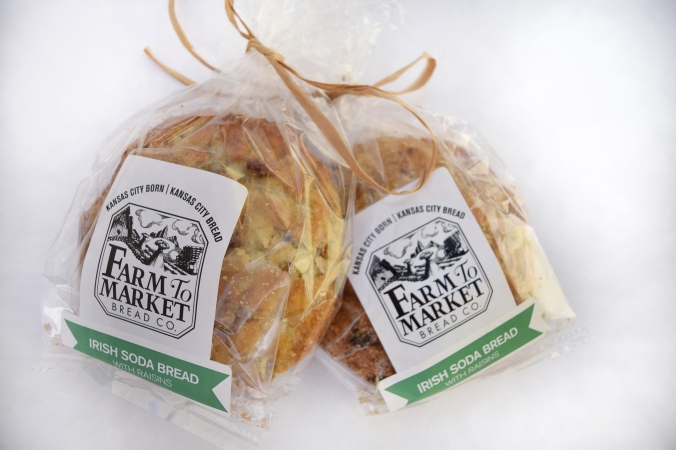 With St. Patrick’s Day around the corner, it’s time for Irish Soda Bread, an international favorite. Although it hasn’t been around for thousands of years – only from about the 1840s – many believe that the Irish soda bread has been a part of Ireland forever.
With St. Patrick’s Day around the corner, it’s time for Irish Soda Bread, an international favorite. Although it hasn’t been around for thousands of years – only from about the 1840s – many believe that the Irish soda bread has been a part of Ireland forever.
Soda bread wasn’t invented by the Irish. Credit has to go to the Native Americans who were using soda ash to leaven their bread well before the Irish discovered the chemical properties of what we call baking soda. .
Irish soda bread was one of the easiest and cheapest breads to put on the table and Ireland was a poor country, having suffered through the potato famine and other man-made and natural calamities. The use of baking soda made a unique chemical reaction that made for an inexpensive but moist and filling bread.
Traditional Irish Soda Bread was made with the most basic of ingredients – flour, baking soda, soured milk and salt. A cross was cut into the top with a knife so as to ward off the devil and protect the household.
Bread baking was an important part of daily life in almost every home in Ireland. Living in isolated farmhouses with only open hearths and no ovens, bread-making was an integral part of daily life in almost every home. Because of the open hearths, the breads, consequently were tender and dense, eaten with the main meal and the bread baked every two to three days because of its perishable nature.
In Ireland, soda bread is often shaped in different ways based on where in the country the loaf is made.
Our Irish Soda Bread here at Farm to Market takes a few extra ingredients, adding a bit of sweetness to the traditional loaf. Using sugar, butter, flour, baking soda and powder, butter and buttermilk, our soda bread takes on a mild sweetness and almost scone like quality. We are proud to add our unique bread to a long tradition of Irish Soda Bread and are grateful to the Native Americans who made it all possible with the discovery of the use of soda in baking.
 Chocolate.
Chocolate. Bread in the Middle Ages was hard to come by and sharing anything to do with bread was a caring kind of exchange. Families would often make flatbread from the leftover flour blended with water to share with those around them. During World War II, with families scattered all over the world, people would send pieces of oplatek to remind family members that they were thinking and praying for them.
Bread in the Middle Ages was hard to come by and sharing anything to do with bread was a caring kind of exchange. Families would often make flatbread from the leftover flour blended with water to share with those around them. During World War II, with families scattered all over the world, people would send pieces of oplatek to remind family members that they were thinking and praying for them.
 We’ve all heard the phrase “a baker’s dozen” but other than knowing we get 13 bagels instead of 12, we don’t know much else. Actually the phrase has its roots around bread.
We’ve all heard the phrase “a baker’s dozen” but other than knowing we get 13 bagels instead of 12, we don’t know much else. Actually the phrase has its roots around bread. Summer. A time for vacations and fun. And many people find their fun in Wyoming, in a small town called Story. Not only are there all the outdoor adventures of fishing and hiking and more, there was a small little restaurant called Waldorf A’Story. Run by a man named Dick Hoover, a gentleman who wanted to escape the heat of Dallas, Texas, and his good wife, Patty, the restaurant was opened and served food to hungry travelers. The restaurant has since closed but Waldorf A’Story Guest Haus is still operating.
Summer. A time for vacations and fun. And many people find their fun in Wyoming, in a small town called Story. Not only are there all the outdoor adventures of fishing and hiking and more, there was a small little restaurant called Waldorf A’Story. Run by a man named Dick Hoover, a gentleman who wanted to escape the heat of Dallas, Texas, and his good wife, Patty, the restaurant was opened and served food to hungry travelers. The restaurant has since closed but Waldorf A’Story Guest Haus is still operating.